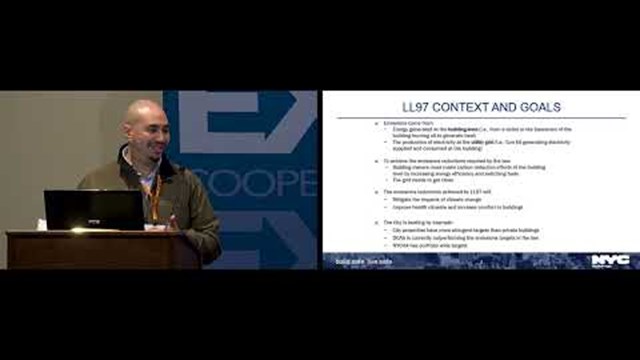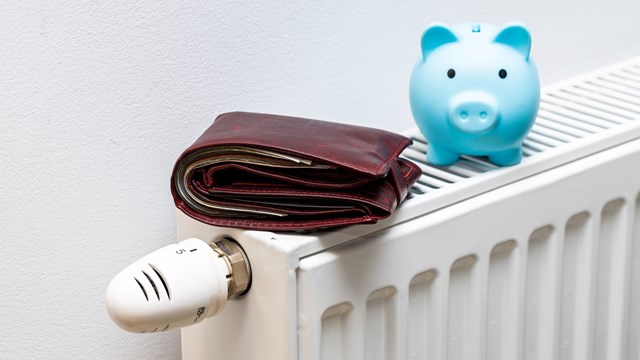
Little by little, the world seems to be getting greener. As part of Mayor Michael R. Bloomberg’s Greener, Greater Buildings Plan, new legislation has been passed that among many other measures, requires all of the city’s private buildings of over 50,000 square feet to obtain benchmarking and energy audits by a certain deadline. That includes most co-op and condo buildings.
“These laws may seem ominous at first because there is a cost to having these studies done,” says Kate Grossman, chief operating officer of New York City-based Greenwich Energy Solutions, “but they were designed to give you information that allows you to make cost effective choices and save money. None of the laws force you to do anything—and that’s important for people to understand. Once people see the savings possibilities, they will just want to do these things.”
Benchmarking
The first law, known as Local Law 84, requires a benchmarking system to be implemented so that the energy and water usages of individual buildings may be analyzed and compared. Water benchmarking will only be required if the building was equipped with automatic meter reading equipment by the New York City’s Department of Environmental Protection (DEP) for the previous year. Owners must report results to the city’s Department of Finance, using the Office of Long Term Planning and Sustainability (OLTPS) format, and they must maintain records for three years. According to the law, benchmarking results must be reported no later than May 1, 2011, and every year thereafter.
Anyone can perform a benchmark on their own by using the EPA’s Portfolio Manager or any complementary interface designated by the OLTPS. Training on benchmarking is also being provided by the Association for Energy Affordability in the Bronx from through the end of January 2011.
“Benchmarking is done as a comparison to similar types of buildings,” says Phil Vos of Manhattan-based energy consultant Bright Power’s business development and marketing group. “That comparison is what allows us to say this building can theoretically be functioning X amount or more efficiently.”
“Benchmarking costs can vary widely,” adds Rand Engineering & Architecture’s Dave Brijlall. “Building owners that have to perform the work can do the benchmark step themselves, or they can retain a firm for $1,000 to $1,500 to perform the benchmarking. The typical cost for an energy audit on [a building] with common, straightforward mechanical systems is approximately $0.15 per gross square foot.”
The pros caution that benchmarking a multifamily residential building with the EPA's assessment tool isn’t necessarily an easy D-I-Y procedure. “It’s important to note that the city has the EPA Portfolio Manager and yes, buildings can do that on their own,” says Barani Tansy, vice president of client services for Greenwich Energy Solutions. “But in order to get a correct assessment, you have to know the exact square footage of your building, and break out the garage, any commercial space…and if you don’t enter it just right, it won’t be benchmarked correctly.”
“One of the other problems with benchmarking is it reads one static point and
time,” Tansy says. “One thing that we offer our clients is an active dashboard that updates the
benchmark and lets you know immediately if something goes wrong, instead of
finding out once a year. It’s a great first step.”
Information about GES and its dashboard can be found at www.greenwichenergysolutions.com.
Bright Power offers a tool called EnergyScoreCards, (www.energyscorecards.com) which Vos says can help a co-op to understand its energy use and track it year to year for about $500 annually. “EnergyScoreCard is a subscription service that will comply with the benchmark law,” says Vos. “From a budgeting perspective, it will help show how much money to put aside for energy next year.”
The pros stress that while the benchmarking process does require some important information collecting, it doesn’t disrupt service in the building, so residents don’t need to worry about upheaval of their daily lives during this process. “When we benchmark a property,” says Vos, “we need cooperation from the board to gather and acquire some very basic info, as well as utility data for the common areas, fuel delivery, gas account numbers, and shooting for about 10 percent of the information from residents.”
When you look at the timeline of making a building more efficient, it comes after the benchmark. “First you run the energy benchmark and you can access performance metrics on how your building is performing using your energy benchmark,” says Greg Sherman, Bright Power's VP of commercial/industrial properties. “Once you determine that, you have an idea of where the opportunities are to save money. Is it in the heating system? Is it in the hot water system? In the lighting? That helps drive the energy audit.”
Local Law 87
The next piece of new legislation is referred to as Local Law 87, and concerns energy audits and retro-commissioning of base building systems. This law requires buildings to submit an energy efficiency report once every 10 years on a staggered schedule determined by the Department of Finance. Building audits are used to identify all potential energy-saving retro-commissioning (operational) and retrofit (capital) measures. The energy audits and retro-commissioning studies apply to buildings’ central systems, including the building envelope, HVAC, conveying, domestic hot water, electrical and lighting systems.
The PlaNYC legislation requires that the the audit is performed in accordance with the standards established by the American Society of Heating, Refrigerating and Air Conditioning Engineers (ASHRAE). Auditors must have certain qualifications outlined in the legislation so as to perform a Level II audit or its equivalent. This means that not only is there a minimum prescribed list of items to check, but that the analysis and hence recommendations follow sound engineering principles. The first subset will be due by December 31, 2013. The audit must be conducted under the supervision of an energy auditor, and the retro-commissioning study must be completed by a certified retro-commissioning agent.
“An energy audit is a comprehensive engineering study that focuses on building energy efficiency,” says Frank Lauricella, business development manager for The Daylight Savings Company, located in Goshen. “It provides the owners or co-op boards with the data to make informed decisions.”
“The energy audit is certainly more hands on, and will typically take anywhere from a half day to two days on-site,” Vos says. “We’ll have two to four engineers running around a building taking measurements, counting light fixtures, spending quite a bit of time in the boiler room, on the roof, hallways, corridors, laundry rooms, common areas, gyms. We really do need access to every part of building.”
That doesn’t necessarily include individual units, however, says Sherman, who likens the auditing process to a doctor’s check-up. A representative sample is all that’s needed, so auditors don’t need to enter every single unit in order to carry out the assessment. “The first step is to go to the building and comb through every energy related system top-to-bottom,” he says.
“That includes the heating system, domestic hot water, building enclosures, the lighting, pumps, motors, and the ventilation system, which is often overlooked. Some info we can get simply by asking the tenant or occupants, some we can’t. Like doctors, we need to gather as much relevant information as possible and look to our own bag of tricks to make the most appropriate recommendations to make the building more water and energy efficient.”
There are three phases for any audit, says Brijlall—the billing analysis, the site work, and the technical analysis. “During the billing analysis, we collect the aggregate billing information for the complex via Con Edison or other utility; we’ll also review fuel oil purchases within the same period. The billing data is used to generate an index that assigns the building a dollar per square-foot or energy per square-foot grade to give the auditor an idea of the energy efficiency.”
Brijlall says that the auditing review includes a scheduled visit to the building, where a roof to cellar survey of all building systems is completed. Information is then collected on the boilers, air conditioning systems, pumps, fans and other mechanical equipment. “We also review the construction of the exterior walls, roof, windows, lobby and common areas,” he says. “We typically survey some residential units insomuch as is required to review the building envelope and central systems (e.g., steam radiators). The survey may take a day or so to gather all information required for the analysis.”
After the review and site visit, the auditor recommends changes to save money and improve performance. “We try to focus on low-cost/no-cost recommendations and items that have a relatively quick payback,” says Brijlall. “We’ll also run computer simulations or perform hand calculations to estimate energy/monetary savings from those measures as well as payback. The final report will prioritize recommendations in terms of cost to implement and payback, and provide a recommendation on possible funding sources.”
Some energy audits have been known to make recommendations that can save as much as 30-40 percent in energy bills, although its more likely that it will be closer to 10-20 percent. “The bigger question is how much money are people willing to spend to save,” Grossman says. “Once you get past the first 10 to 15 percent, you get into some of the more capital expense problems, like changing out the boiler. We found buildings of as much as 40 percent, but the higher you go, the higher the upfront cost will be.”
The Results are In
When an energy audit is over, Tansy says the auditing firm will present their clients with a very clear, precise report layout of all cost savings, energy savings and payback, touching on what they recommend, don’t recommend or what they need more information about.
“We set up a meeting with the board and walk them through the audit report and interpret everything so the board can read, understand and feel comfortable,” she says. “We show what we discovered, offer professional advice and encourage you to make these changes. We like to help people make this less of a challenge so they have the opportunity to save money on their operations.”
Energy savings come easier when the auditor is involved with the interpretation.
“We provide a written report plus a debrief to the board as our usual way of presenting the findings,” Lauricella says. “In fact, we work with the property managers and the board designated contact throughout the process.”
Final Thoughts
A professional benchmarking assessment can cost a residential building anywhere from $500 to $1,500 depending on the building’s size and mechanical complexity, and some of the monthly subscriptions add on a small fee each month. For an energy audit, things get a little pricier, with the expense for an average New York-sized condo or co-op starting at about $10,000 based on price per square-foot. Of course this money will be returned over the long run, once a building starts utilizing the energy savings recommendations.
Not everything is set in stone though. “It should be noted that co-ops/condos are not currently bound to the findings in the audit,” says Brijlall. “They can choose to implement the recommendations and reap the energy saving benefits or not.” For those who don’t meet the legislative deadlines, fines may be imposed and are speculated to be as much as $500 a month or more, although as of the end of 2010, the numbers hadn’t been set yet.
Still, most companies recommend not waiting until the deadline and start complying early and getting the yearly benchmark and audit out of the way. Buildings that start now will have two two years earlier that they can be taking advantage of energy savings advice.
“A lot of people think this isn’t going to happen,” says Grossman, “but waiting to see is not a good strategy. The city is requiring it and it’s not going to go away. As we get closer, there will be a mad rush so clearly the more people looking, the more they can charge.”
Keith Loria is a freelance writer and a frequent contributor to The Cooperator.









Leave a Comment